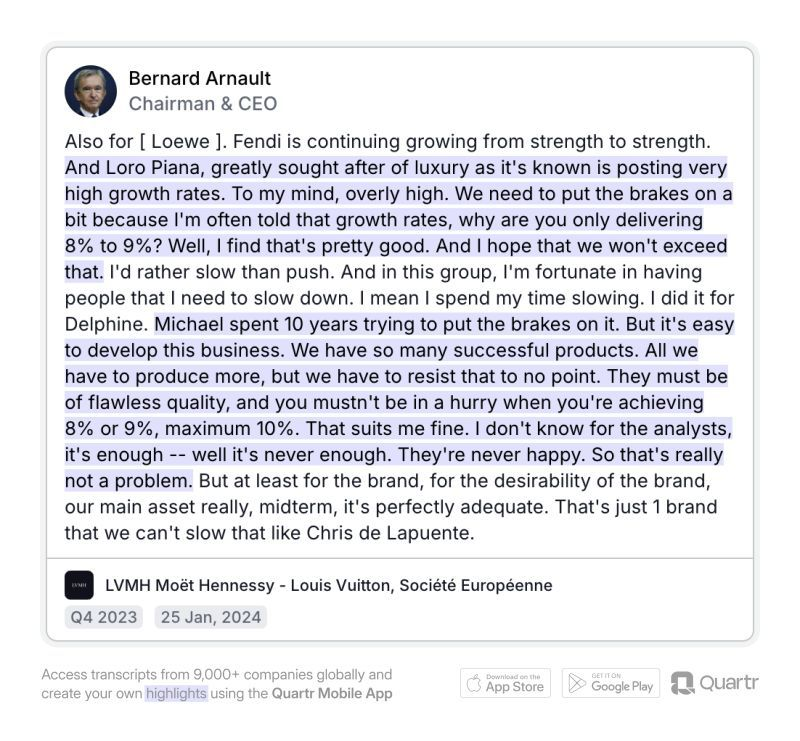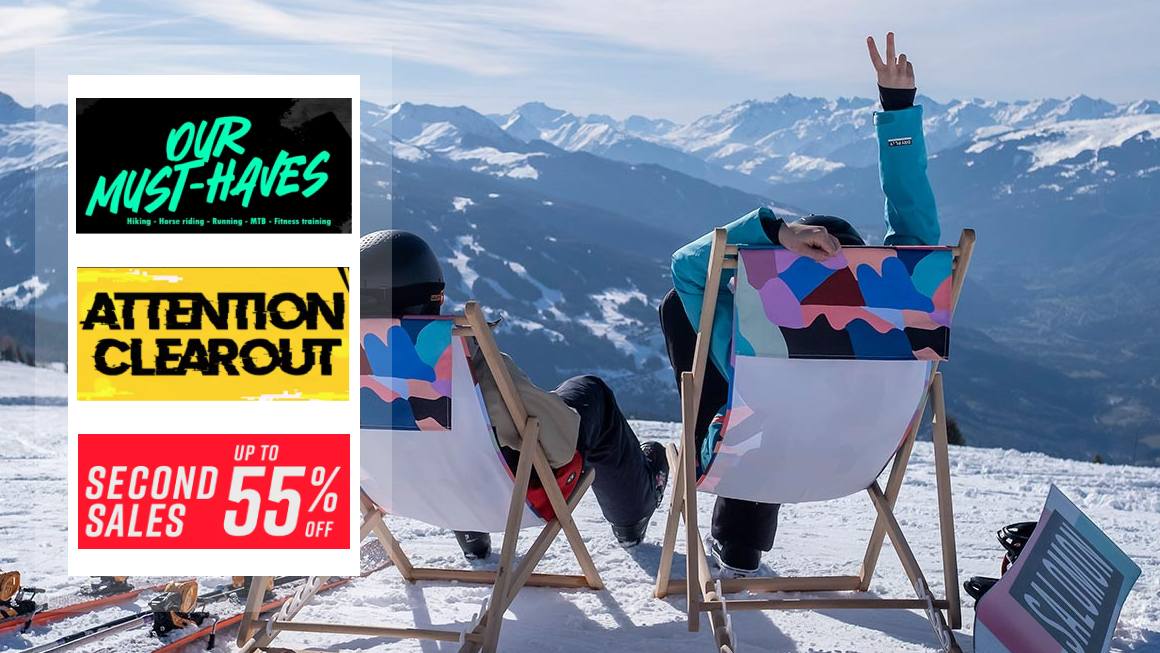First, this article is written based on my past and current experiences in the sportswear, outdoor and fashion industries, mainly related to the management of brand e-Commerce projects. If you’re reading this article and you manage another kind of e-Commerce store (like a multi-brand, marketplace, or digital account) you will probably find it difficult to apply some statements to your project. The overall goal is to describe some logic behind the discounts applied in the industry and some possible strategies and actions you can consider, to avoid entering the infinite loop of continuous discount percentage increase.
First acknowledgement: discounts are brand-related.
The main reason behind the need for discounts is related to the brand. In the best-case scenario (which is rare) your brand has high demand, the production is limited, and you have a limited distribution strategy = your sell-out is near 100% and there’s no need to discount at all. An example? the concert of the Foo Fighters at Firenze Rocks (Italy): limited demand (100.000 tickets), limited production (1 concert every 2/3 years), and limited distribution (Ticketone.com). The output? 100% sell-out. But in the average case scenario, your sport/outdoor brand is not a concert. You still have a high demand, but it is covered by a lot of other competitors that propose a similar solution to your customer’s needs. You still have a limited production but a continuous chain (explained in the following paragraph). Your distribution is typically not limited: to wholesale physical stores, big online retailers, multi-brand digital accounts, distributors, DTC channels, events, races and more. The output? low sell-out. Your stock is sitting in the store warehouses rather than the customer wardrobe. As a consequence, you’re forced to start discounting products, to leverage on the price factor.
The first step: understand the actual sell-out situation of your brand.

Sell-out: from the retail to the end customer.
Second acknowledgement: more seasons, more discounts.
In addition to the poor sell-out (possible scenario), the brands in the sportswear industry are developing yearly seasons/collections. It’s a standard in the business, mainly in the fashion industry, but affecting the sportswear industry too. This logic keeps adding products to the market, with the related increase of discounts of past seasons, which are usually marketed as “outlet”, “archive“, and “sales” deals. As you might already know, it’s a deal for the customer, but the company sells a product with less margin. I first read the statement “no season, no discount” in this article from the Cycling Industry, with the Apidura brand as an example. I strongly advise reading that article. I will only take this concept: a growth-led business mindset will produce the new “Phone 14” as an improvement of the old “Phone 13” with minor changes (did I miss an “i” before Phone?). The consequence is the obsolescence of the “Phone 13”, which will be easily discounted as the “Phone 14” sets the new full price level. Every new version of your product pushes the discounts on the old versions of it.
The second step: be aware of the seasonality loop of your brand.
Third acknowledgement: a competitive market leads to discounts.
Quick and straight to the point. The more your competitors are, the more your sell-out is suffering. The more the competitors discount, the more you need to react by discounting your products (to match their price point or at least have a decent/competitive price).
Identified the problems, let’s focus on some possible solutions. How can you sell more of your products without discounts? How can you justify the full price? Some proposals are not in order, not with a priority. Define yours.
Proposal 1: develop a catalogue segmentation.
Your brand should start to segment the product catalogue and avoid selling every product to every channel. Led the board team to evaluate e-Commerce dedicated products, colours, and collections. Are you familiar with the acronym “SMU”? it means Special make-up. “Special make-up is when a Brand (i.e. supplier) manufactures an item that is special for a retailer. SMU orders typically have Minimum Order Quantity (MOQ) restrictions associated with them“, as described by Eytan Daniyalzade on Toolio.com. If you are an e-Commerce Manager, you can ask for unique SKUs to be sold in your store. It’s an effective way to reduce the competition because you’re the only one selling the item. Consider that you probably need to work with the Supply Chain team, to understand the Minimum Order Quantity for that special product. This logic can be part of a bigger “Tier-based segmentation” applied by the brand. This comes mainly from the retail business when customers of a brand are divided into Tier 1, Tier 2, and Tier 3. Each Tier is offered a different product segmentation from the top to the bottom.
The main benefit is the control of price on these unique SKUs. If the e-Commerce channel is the only channel to sell those products, you have a higher possibility to sell full-price (scarcity effect).

Proposal 2: offer unique services/experiences to generate value.
Create uniqueness. It’s a key concept: if you can offer a service or an experience (which is a solution to a customer need), well, your customer will be willing to pay the full price for your product. A Linkedin Post inspired this concept, by Marco Loguercio, founder of an Italian digital agency. Marco stated that Brand e-Commerce should not be fighting the price war, but instead focus on generating value. If your brand has a mono-brand e-Commerce, you can offer unique experiences through it. Which other digital players selling your products can’t (always) do. Three ways, three examples:
- Unique experiences: A concrete example from the cycling industry: Band of Climbers, sells cycling clothing on bandofclimbers.com. But they sell connected experiences on bocescapes.com. They allow UK cyclists who desire to go to the Dolomites, to realize their dream. Will these customers be willing to wear a BOC jersey after BOC allows them to achieve their life dreams? Maybe not for all and not the day after, but when they will need a new jersey, the BOC experience will be top-of-mind for many. Value generated (the dream realized).
- Unique services: you can offer unique services, like shipping methods. An example can be the UPS Access Point service. An example from the Outdoor Industry: The North Face, offers the possibility to pick up your items, instead of having them shipped at home. Which is a lower-impact choice for the planet as well, see the screenshot below. Value generated (the green choice).
- Unique customization: you can offer unique products, customized. An example from Le Col Custom, a cycling brand. They allow the customer to create unique jersey designs. The jersey is the same as you can find online but the brand offers the customer the possibility to customize it with their team name, graphic, sponsor and more. Value generated (the custom design).

Proposal 3: propose a slower and steady growth.
This is the strongest and least applicable proposal at the same time. Ask your finance team (or your CFO) to grow slowly. And you will be their number one enemy, right? Well yes, if your CEO’s goal is to make the business grow as fast as possible, to later sell it to the best offer, gain some good money, and retire in a peaceful place with sand and see. Not a bad plan overall. Also, Bernard Arnault (LVMH), stated the importance of this logic. See the screenshot below.
If you can resonate with your company, explain that steady growth can be an opportunity to build a brand that lasts (over seasons). You don’t need to discount aggressively during the peak sale period, focusing on fewer sales with higher AVG (Average Order Value).
Focus on a few big new products, high-quality, long-term durable materials. Something “Built to Last“. “Apidura’s focus can remain on meaningful product innovation and improvement, rather than colour trends or other transient and artificial drivers of consumer demand.” shared Tori Fahey. Work on this: carryover SKUs that are evergreen. Some products that identify your brand online, are so unique season over season that discounts are not needed.

Proposal 4: anticipate new product deliveries.
Try to anticipate your stock deliveries for newness, ideally, before the official launch date in the market. If you have stock in your warehouse before other channels (digital accounts, wholesale) you can anticipate some full-price sales (before the price war starts). Offer it as a special deal to your contact database: Membership-only anticipated sales for new products, with the possibility to have the full-size run option available, before anyone else.
If you’re capable of linking it to an event, way better (a race, e.g. UTMB for a trail running brand or a WorldTour race e.g. Tour de France for a cycling brand). You’re brand demand (search volume) should be increasing if you’re participating in these events (even with minimal activities). Having stock in your warehouse (before other channels) it’s a key factor to capture that increasing demand.

The deal is more with your planning team, coordinating the shipments in advance.
Proposal 5: check the discount across your internal channels.
If you’re managing a mono-brand e-Commerce project, in most cases, your first competitors are the internal sales force. Check if the digital accounts sell your products with discounts. In the outdoor/sportswear industry, you’re probably dealing with big players like Tradeinn, Deporvillage, Bergfreunde, Zalando, JD Sport, Sportshoes and similar.
Those digital accounts are probably selling the same best sellers of your brand e-Commerce. Can you ask the sales team to help you? To at least suggest a certain period, after the product launch, when the discounts are limited. This way you can benefit in the first months from having a match price situation across the digital landscape.
Proposal 6: offer full-size run and full catalogue-wide choice.
When you’re placing your buy for the season, try to offer the widest choice. For product styles, colors, and sizes. The wider the choice, the more possibility you have to cover some uncovered demand.
If other channels (like wholesale) are not buying some products, maybe you can benefit from it, having all the catalogue range available on your website.
Actions after reading
If you need suggestions on these proposals, please contact me. I’ll be glad to help.
Email: andreafagan93@gmail.com
Side notes, credits, sources
Articles: Toolio.com, Cyclingindustry.news.
Images: Sankhya.com, Medium.com, Sciconsports.com, Thenorthface.it, Skiworld.co.uk.

